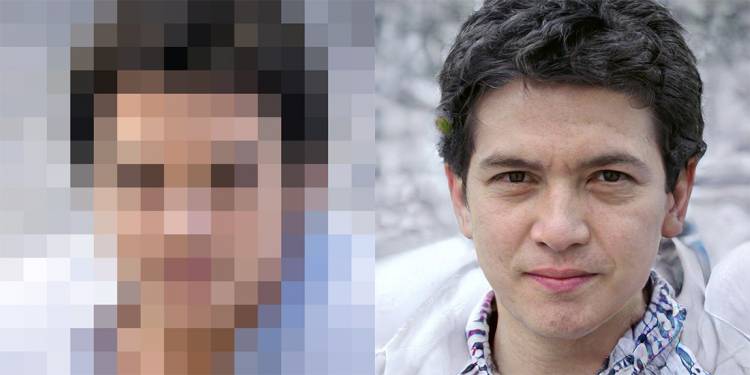Artificial intelligence system can clarify blurry images and create new faces / Il sistema di intelligenza artificiale può chiarire immagini sfocate e creare nuovi volti
Artificial intelligence system can clarify blurry images and create new faces / Il sistema di intelligenza artificiale può chiarire immagini sfocate e creare nuovi volti

Researchers from Duke University created an artificial intelligence (AI) tool that can turn blurry pictures of faces into computer-generated portraits with fine details.
Previous methods to clarify blurry images can only scale up an image of a face up to eight times its resolution, leaving the image blurry and indistinct. However, the new system, called PULSE, can generate realistic faces with up to 64 times resolution, creating images with fine lines, eyelashes and stubble.
According to the team, PULSE cannot be used to identify people. Rather, the system creates an entirely new face from the blurry images, taking lower resolution shots of almost anything and creating sharp and realistic pictures for applications such as medicine, microscopy, astronomy and satellite imagery.
PULSE searches AI-generated examples of high-resolution faces and searches for new ones that look as close to the input image when shrunk to the same size. To achieve this, the team used a machine learning tool called a generative adversarial network (GAN). With this method, two neural networks were trained on the same dataset of photos. One network comes up with AI-created faces that mimic the faces it was trained on, and the other takes the output and decides if it is convincing enough to be mistaken for a real face. The first network gets more accurate with experience until the second network cannot tell the difference between a real photo and an AI-generated photo.
PULSE can create a number of lifelike images from a single blurred image of a face, even if the photo has eyes and mouth that are unrecognizable. It can convert a 16 x 16 pixel image of a face to 1024 x 1024 pixels in seconds, adding more than a million pixels to create HD resolution.
To test the system, researchers asked 40 people to rate 1,440 images that were generated by PULSE and five other scaling methods. The images were rated on a scale from one to five. PULSE performed the best and scored almost as high as high-quality photos of actual people.
ITALIANO
I ricercatori della Duke University hanno creato uno strumento di intelligenza artificiale (AI) che può trasformare le immagini sfocate di volti in ritratti generati dal computer con dettagli precisi.
I metodi precedenti per chiarire le immagini sfocate possono solo ridimensionare l'immagine di un volto fino a otto volte la sua risoluzione, lasciando l'immagine sfocata e indistinta. Tuttavia, il nuovo sistema, chiamato PULSE, può generare volti realistici con una risoluzione fino a 64 volte, creando immagini con linee sottili, ciglia e capelli.
Secondo il gruppo, PULSE non può essere utilizzato per identificare le persone. Piuttosto, il sistema crea un volto completamente nuovo dalle immagini sfocate, facendo scatti a bassa risoluzione di quasi tutto e creando immagini nitide e realistiche per applicazioni come medicina, microscopia, astronomia e immagini satellitari.
PULSE cerca esempi generati dall'IA di volti ad alta risoluzione e ne cerca di nuovi che sembrano più vicini all'immagine di input se ridotti alla stessa dimensione. Per raggiungere questo obiettivo, il gruppo ha utilizzato uno strumento di apprendimento automatico chiamato rete generativa contraddittoria (GAN). Con questo metodo, due reti neurali sono state addestrate sullo stesso set di dati di foto. Una rete presenta facce create dall'intelligenza artificiale che imitano le facce su cui è stata addestrata, e l'altra prende l'output e decide se è abbastanza convincente da essere scambiata per una faccia vera. La prima rete diventa più accurata con l'esperienza fino a quando la seconda rete non è in grado di distinguere tra una foto reale e una foto generata dall'intelligenza artificiale.
PULSE può creare una serie di immagini realistiche da una singola immagine sfocata di un viso, anche se la foto ha occhi e bocca irriconoscibili. Può convertire un'immagine di 16 x 16 pixel di una faccia in 1024 x 1024 pixel in pochi secondi, aggiungendo più di un milione di pixel per creare una risoluzione HD.
Per testare il sistema, i ricercatori hanno chiesto a 40 persone di valutare 1.440 immagini generate da PULSE e altri cinque metodi di ridimensionamento. Le immagini sono state classificate su una scala da una a cinque. PULSE ha ottenuto il meglio e ha segnato quasi quanto le foto di alta qualità di persone reali.
Da:



Commenti
Posta un commento